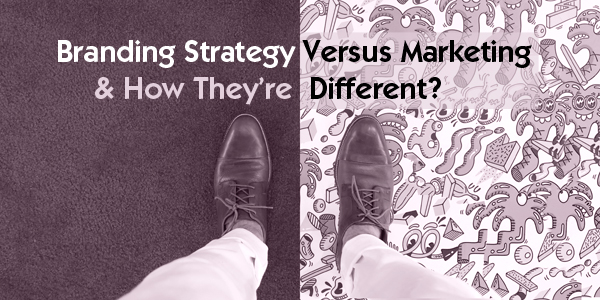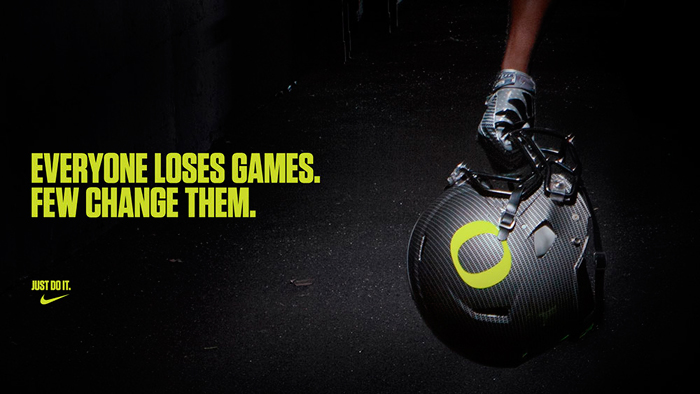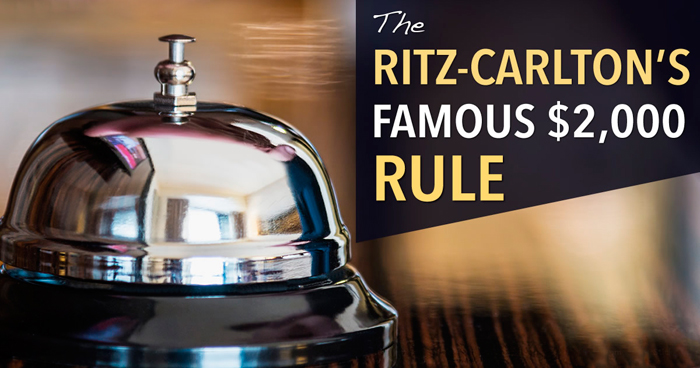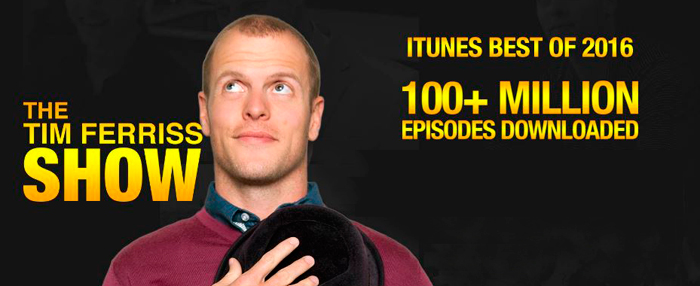
How Branding Strategy is Different to Marketing
When talking to anyone outside the Marketing department, you will quickly realize that many do not understand the difference between marketing and branding. Even many Marketers need a refresher from time to time, as the two often become confused. The quickest and easiest way to remember the difference between the two is that branding strategy is the bedrock underpinning a whole business or organisation because it provides the direction for marketing, communications, and campaigns. Both are equally important disciplines but they are not the same and require different types of expertise.
Another way of thinking of the two is “Marketing” is the push, while “Branding” is the pull. Some use the metaphor of the sun and the moon. The sun is the source of life, the reason that we are here. This is branding. The moon uses gravity to pull the tides and other life forces. This is marketing. Remember push and pull, we will visit it a few times in this article.
We know that sometimes it’s a struggle to build a strong brand strategy that really engages your ideal customers effectively so we’ve developed three different ways of working with us to help you build your brand and increase your sales, depending on your preferences, so if you’d like us to:
- Build your brand for you – find out more here or get in touch [email protected] or ring +353 1 8322724?
- Empower you to build your brand – check out the Persona Brand Building Blueprint™ Mastermind here. This is a two-day intensive where you work on your brand with us codifying and mapping out your agile branding strategy, underpinned by big-brand know-how, for 7-figure business growth. Alternatively, join our half-day Branding Accelerator Masterclass for a fast-injection of brand building essentials. Ask about our Personal and Corporate Leadership Brand Alignment Masterclass
- Want a DIY solution? Check out our how to build a brand eprogramme here and our how to audit your brand yourself eprogramme here
What is Branding and Branding Strategy?
Branding is the promise that you make to your customers — it gives your customers a compelling reason to buy because you’ve created an authentic meaning and connection between your ideal customer and your product or service. It is the expression of principles and values that your organisation believes in and that your ideal customers resonate with. Branding communicates to customers what your company is, and what it is not. Branding should both precede and inform any marketing communications, campaigns, or design for that matter, that your company creates. Branding strategy must come first.
Branding defines who you are, what you stand for, why you exist, how you’re different, and why you’re the perfect choice for your ideal customers. It is essential to get crystal clear on your brand strategy before you do anything else.
The Branding Strategy Process
There is a solid system behind the building of every successful brand. It is an important, multi-step process that really dives deep into what your brand stands for, how it wants to be portrayed, and what its strengths and weaknesses are. We will walk you through a few of the elements, although in practice it’s a 10-step systemised process that entails too much to include in one article. Consider this an overview or introduction.
Branding Strategy and Brand Archetypes
The brand archetype is an extremely effective part of the brand codification process used to build out your brand strategy for your business, organisation, product or services. Brand archetypes play off of truths and roles that already run in our subconscious from history, movies, TV, and culture.
The reason for using brand archetypes is to mentally associate your brand with something iconic — already embedded within the conscious and subconscious of humankind — that’s relevant and meaningful to your primary audience in the context of what you are selling. The 12 Brand Archetypes are as follows: The Magician, The Sage/Guru, The Every-Day Man/Woman, The Ruler/Monarch, The Lover, The Explorer, The Outlaw/Rebel, The Jester/Clown, The Caregiver, and The Creator.

Related: Discover How to Use Brand Archetypes To Build Your Winning Brand
One of the most prolific uses of successful brand archetyping in branding strategy comes with the international powerhouse, Nike. Nike is “The Hero” brand archetype, and it shows through all the way from their name, to their logo, to their brand promise. The name of the company itself comes from the Greek goddess of victory. The brand promise of Nike is that they will take ordinary people and turn them into victors. And just like the quintessential hero story that we all know and love, there are challenges, breaking points, highs and lows, training montages, and of course, victory. These images and themes can be seen throughout everything the brand does and says. The latest Nike ad features a very powerful message of female heroes and the challenges they have endured to become victorious.
The true power of using a brand archetype in your branding strategy like Nike has done is that the archetype and story enable brands to diversify their markets without diluting their core brand story.[1] At their core, brand archetypes are human truths and stories that translate across languages, culture, and gender — they bridge diversity. This archetype has clearly worked for Nike, as they have a global brand value of $32.4 billion and the largest market share of the global apparel market compared to other apparel companies.[2]

Image via ©Nike
Are you a business leader, manager or entrepreneur who wants to re-evaluate or build your brand strategy so you can effectively leverage trends, seasonal occasions or events to increase your sales? Are you curious about how to build or scale a highly successful standout brand? Join one of our agile branding workshops because they empower you to build your brand, enhance customer experience, expand your market impact and create higher perceived value so you can command a premium.
In fact, the Persona Brand Building Blueprint™ Mastermind is all about fast-tracking you, your brand and your business through the brand building, agile branding strategy process using big-brand know-how with proven systems that get results so you can grow your business faster and more effectively.
If you want a tailor-made solution specifically for your brand then we also provide in-house bespoke Persona Brand Building Blueprint™ Intensives working with you and your team so you can grow your business faster and more profitably. Contact us to discover more [email protected] or +353 1 8322724
Branding Strategy and Storytelling
Once you are crystal clear on your brand purpose, vision, mission and brand values, storytelling should become easier. A great example of brand storytelling based around brand values comes from Ritz-Carlton, the luxury hotelier.
Ritz-Carlton considers itself the premier service-oriented luxury hotel franchise. At the core of everything they do is the goal of achieving excellence in customer service. The co-founder of Ritz-Carlton, Horst Schulze, implemented a new policy that would empower every employee to spend up to $2,000 to make a guest happy. The company also implemented a 10-minute storytelling meeting at every location, to ensure that the stories would spread company-wide, and eventually to the customers.
Related: How to Use Brand Values to Drive Unwavering Customer Trust and Commitment
One of the best stories involves a housekeeper named Mary. She flew from Atlanta to Hawaii after a guest had forgotten a laptop in his room. He had an important presentation on the computer and Mary didn’t trust a courier to get it to Honolulu on time. So, instead, she got creative and hand-delivered the laptop to the man in Hawaii! The story spread, and solidified the company’s brand values in everyone’s mind, even more than they already had.[3]

Image via CustomersThatStick
What is Marketing versus Branding Strategy?
If your brand is “who you are”, then Marketing is the message. It is how, where, and when you convey that message, and to whom. This is why we say branding is “pull” and marketing is “push”. Your marketing strategy should be informed by your brand strategy, and cover your company’s message and how it gets to the end customer.
Different Types of Marketing
Marketing is a huge umbrella that covers literally every aspect of getting the company’s message out into the market — the how of its transmission. Marketing is directly related to revenue and should be tracked for return on investment. Marketing strategies can include paid advertising, content marketing, and even product placements. Here, we will only discuss three of the most common marketing strategies.
Paid Advertising
Paid Advertising is possibly the most recognizable marketing strategy. We are all over-stimulated by adverts in the media every day. Usually, when one thinks of paid advertising, they think of B2C marketing. But paid advertising is huge for B2B as well. Mainly by the way of PPC (pay-per-click) adverts and so on.
Related: 4 Myths About Branding That Will Forever Change Your Marketing Mindset
A great example of B2B paid advertising campaign comes from Embraer, a Brazilian planemaker. They were being dwarfed by big shots Boeing and Airbus, so they looked to a new paid advertising campaign to bring traffic to their site and increase their share of audience.
Their response was a bit out there. They painted an eagle on a few of their aeroplanes, paid for outdoor and digital advertising, and refreshed their website with collateral that reflected the marketing campaign. Although the campaign wasn’t exactly revolutionary, their results were. They increased Share of Audience by 624% and website traffic by almost 86%. The campaign directly translated into 50 new orders, or 3 billion in revenue. Talk about an ROI.[4]
Content Marketing
Content marketing is a marketing strategy focused on creating and distributing valuable and consistent content often, to attract, nurture and retain an ideal customer base. Instead of pitching your products or services, the content should keep the customer engaged, with the intent of ultimately leading to increased revenue. A company that does content marketing incredibly well is Hubspot. They are always creating engaging free and gated content that keep subscribers watching and reading.
Hubspot is a content creation powerhouse, producing hundreds of videos, blogs, and whitepapers per year. They cover all sorts of topics, some relevant to their primary line of work, some are not. They make content about cryptocurrency, AI, emotional intelligence, psychology, and even arcades. But, all of their content has one thing in common: it is useful to the end consumer — their ideal customer or prospect.
Hubspot makes video and blogs that are clickable. And, not just clickable. They are incredibly interesting and informative. Their videos rack up millions of views on Youtube, and it’s no wonder why. Just try to stop watching one of their videos in the middle. It’s pretty hard.
Another great example of content marketing comes from the best-selling author podcast extraordinaire, Tim Ferriss. He has made a name for himself by becoming essentially a human guinea pig and trying all the latest trends in physical health and productivity. Beyond that, he has one of the most successful podcasts around and has reached over 100,000,000 downloads to date, interviewing highly successful people about their life and how they reached these levels of success.
Related: Personal Branding, We Are All CEOs (Part 1)
How did Tim Ferriss become one of the most successful personal brands around? He created an accessible community and CONTENT. So much content. To date, Tim has created 4 best-selling books, 300+ 2-hr podcasts, countless blogs, and online e-courses. When looking to establish a solid content marketing strategy, one always should find their niche and create vibrant communities around the content and interactions. And above all else, create useful content that engages the ideal user.

Image via BruceClay
Related: Personal and Corporate Brand Alignment Podcast, Lorraine Carter Guest Interview with Alex Gibson on The Persuaders Dublin CityFM
Social Media
Social media marketing is now mainstream and becoming more sophisticated by the day because the big tech firms behind the most widely used platforms relentlessly change the ‘game’ to up their revenues. A word of caution, it doesn’t necessarily make sense for all businesses or organisations. However, this marketing strategy can be very effective when used correctly and focused on the right market and ideal audience. And with the right luck, you might even go viral.
If you’d like to discover more about building and maintaining a thriving, high performing, highly profitable standout brand using big-brand know-how, then get in touch because we’d love to help you make your brand into a profit powerhouse.
- Schedule an appointment — we can meet in person or online
- Allow us to create a customised plan for you
- Let’s implement the plan together
- Contact us [email protected] or ring +353 1 8322724 (GMT Dublin/London time 9:00 – 17:30 weekdays)
Lorraine Carter is a branding expert and international speaker delivering talks that inspire and motivate along with masterclasses and workshops that inform and support transformational outcomes fast, and consultancy expertise that solves problems so you can outshine, outperform and leave your competitors way behind.
An example of the creative use of social media marketing is the Mercedes influencer campaign. They allowed 5 Instagram influencers to take pictures of themselves inside a new Mercedes CLA and post to their followers. The influencer with the most likes got to keep the car. The posts went viral and Mercedes garnered 87,000,000 organic Instagram impressions and 2,000,000 Instagram likes. Watch the video below to see the campaign in action.[5]
This Mercedes case was one of the first Influencer campaigns of its time. Since then, the Influencer market has exploded. There are hundreds of thousands of Instagram and Youtube influencers out there today. Does influencer marketing make sense for your company? Read the blog below to find out.
Related: How to Use Influencers to Grow Your Brand and Open New Markets
Final Thoughts
Branding strategy should always come first. Once you have a rock-solid brand strategy, then you can begin to think about marketing communications, campaigns and design. Every single marketing campaign should be informed by the larger brand strategy. Strong brands use their knowledge of the difference between branding and marketing to create effective marketing campaigns that work with their brand positioning strategy. So, remember, Marketing is the “push”, and Branding is the “pull”, and branding must always come first!
Related: Boringly Bland Brand? How To Create a Unique Brand and Market Positioning
Questions to Consider:
- What are your brand values?
- What is your brand archetype?
- How does your brand use brand storytelling?
- Have you created a fully-functioning brand strategy before moving into marketing campaigns?
- What types of marketing campaigns and communications does your company use?
- Are ALL of your marketing campaigns informed by your greater brand strategy?
- Does your brand need a refresh, revitalising or total rebrand?
Related: What You Can Learn from The Most Iconic Rebranding Strategies of All Time
Your Persona Client Satisfaction Guarantee
- When you work with us we’ll create a customised brand building plan and strategy with clear investment for you tailored to your specific requirements and preferences
- You’ll know each step of your brand building journey before we start because we’ll discuss it, document it and agree on it with you before work commences
- You’ll have timelines, key milestones and deliverables to evaluate and approve for each stage and part of your brand building process
- Because we know the unexpected sometimes happens we can make adjustments along the way if you need it and if something extra is requested we’ll ensure you’re fully appraised about what that entails before committing
- As we achieve pre-agreed objectives you’ll be able to evaluate your brand building work and strategy in progress, coupled with the outcomes to ensure return on investment
Get in touch today because we’d love to get started helping you build your standout, powerhouse brand so you can increase your profits and leave your competitors way behind.
Email us [email protected] or ring us +35318322724 (GMT 9:00-17:30) and ask about our VIP Brand Strategy Discovery.
References
- https://www.brandpsychestrategies.com/blog/2017/7/17/nike-brand-hero-archetype
- https://www.statista.com/statistics/856454/market-share-of-the-leading-clothing-and-apparel-brands-worldwide/
- https://www.forbes.com/sites/carminegallo/2019/03/14/how-a-luxury-brand-spends-10-minutes-a-day-to-create-five-star-service/#29da2315661b
- https://www.b2bmarketing.net/en-gb/resources/b2b-case-studies/awards-case-study-embraer-increases-share-audience-624-challenger-brand
- https://senseimarketing.com/10-examples-innovative-influencer-marketing-campaigns/



